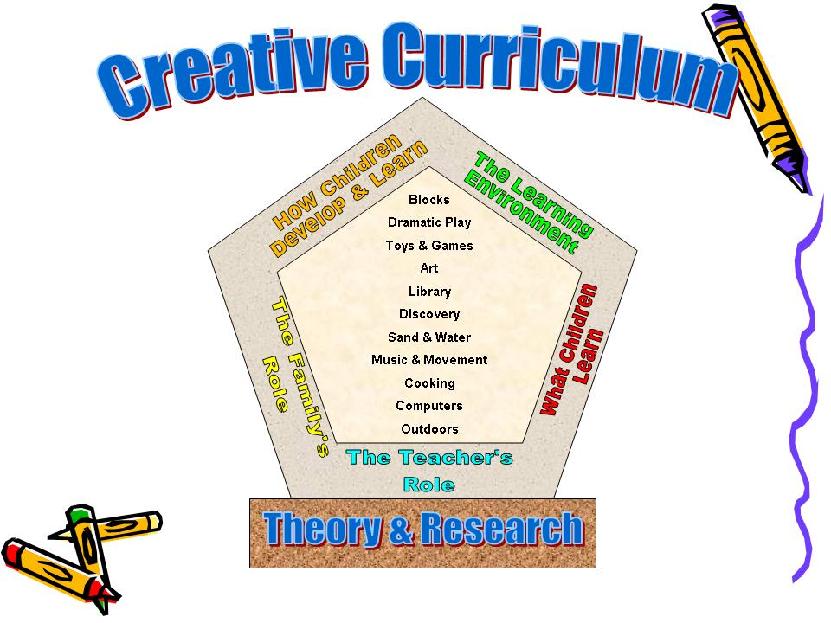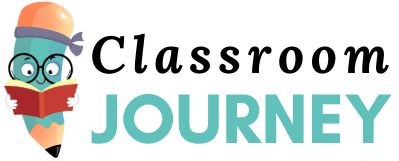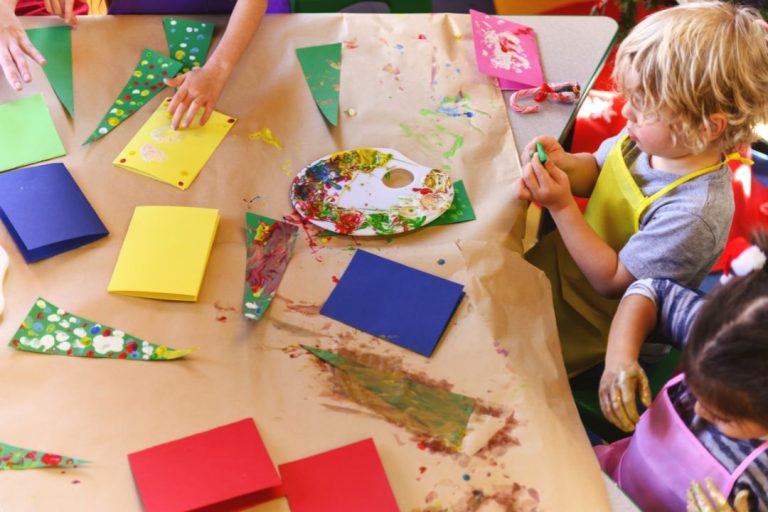What is Curriculum in Early Childhood Education : The Essential Guide

Curriculum in early childhood education refers to the planned learning experiences and activities for young children. It encompasses the structure, content, and organization of what children will learn and how they will learn it.
In the field of early childhood education, curriculum plays a crucial role in shaping children’s development and preparing them for future academic success. A well-designed curriculum takes into consideration the unique needs and interests of young learners, providing a framework for educators to support children’s growth and learning.
By focusing on age-appropriate activities, social-emotional development, and cognitive skills, early childhood curriculum lays the foundation for a lifetime of learning and achievement.
Defining Curriculum In Early Childhood Education
Curriculum in early childhood education plays a crucial role in shaping the learning experiences of young children. It encompasses the planned and unplanned activities, as well as the environments and interactions that contribute to a child’s development. Understanding the meaning, purpose, and importance of curriculum in early childhood education is essential for educators and parents alike.
The Meaning And Purpose Of Curriculum
In early childhood education, curriculum refers to the holistic plan that encompasses all learning experiences and activities, both structured and unstructured, that occur within an educational setting. It aims to promote the overall development of children, including their cognitive, social, emotional, and physical growth. The purpose of early childhood education curriculum is to provide a framework for facilitating and supporting children’s learning and development in a way that is developmentally appropriate and culturally sensitive.
The Importance Of Early Childhood Education Curriculum
The importance of a well-designed early childhood education curriculum cannot be overstated. It sets the stage for a child’s lifelong love of learning, fosters the development of essential skills, and promotes school readiness. A thoughtfully constructed curriculum also supports children’s social and emotional well-being, laying the foundation for positive relationships and self-regulation.
The Role Of Teachers In Curriculum Development
Teachers in early childhood education play a pivotal role in curriculum development. They are responsible for creating an enriching and stimulating learning environment, implementing developmentally appropriate practices, and individualizing instruction to meet the diverse needs of children. Additionally, teachers collaborate with families and communities to ensure that the curriculum reflects the cultural diversity and values of the children in their care.
Types Of Early Childhood Education Curriculum
When it comes to early childhood education, the curriculum plays a vital role in shaping the learning experiences of young children. There are different types of early childhood education curriculum, each with its unique approach to supporting children’s development and learning.
Play-based Curriculum
A play-based curriculum is centered around the idea that children learn best through play. It emphasizes hands-on, experiential learning in a fun and engaging environment. Children are encouraged to explore, create, and interact with their surroundings, fostering creativity and critical thinking skills.
Montessori Curriculum
The Montessori curriculum is based on the principles developed by Maria Montessori. It focuses on self-directed learning and individualized instruction. Children are given the freedom to choose their activities and work at their own pace, promoting independence and self-discipline.
Reggio Emilia Curriculum
The Reggio Emilia approach views children as active participants in their learning. This curriculum emphasizes collaboration and expression through various forms of art and communication. It values the child’s innate curiosity and encourages exploration of the world around them.
Planning And Implementing Curriculum
In early childhood education, planning and implementing curriculum is crucial to providing a meaningful and effective learning experience for young children. This involves assessing children’s needs and interests, setting learning goals and objectives, designing learning activities, and incorporating technology in the curriculum.
Assessing Children’s Needs And Interests
Before creating a curriculum, educators must assess the unique needs and interests of each child. This involves observing their play, interactions, and responses to different activities. By understanding what captivates and engages them, teachers can tailor the curriculum to better suit the children’s individual learning styles and preferences.
Setting Learning Goals And Objectives
Establishing clear learning goals and objectives is essential for guiding the curriculum. These goals should be specific, measurable, and achievable, outlining what the children are expected to learn and accomplish. By setting these objectives, educators can ensure that the curriculum is purposeful and aligned with the developmental needs of the children.
Designing Learning Activities
Engaging and diverse learning activities are designed to stimulate children’s curiosity and foster their development. These activities should be hands-on, interactive, and age-appropriate, promoting exploration and discovery. By offering a variety of activities, educators can cater to different learning styles and provide a well-rounded learning experience.
Incorporating Technology In Curriculum
In today’s digital age, integrating technology into the curriculum can enhance learning experiences. Educators can utilize educational apps, interactive games, and multimedia resources to support and enrich the curriculum. By incorporating technology, children can develop digital literacy skills and engage with content in innovative ways.

Credit: mybrightwheel.com
Evaluating And Improving Curriculum
Evaluating and improving curriculum is crucial in early childhood education to ensure that it meets the developmental needs of young learners. By assessing the effectiveness of the curriculum, educators can make informed decisions to enhance the learning experience for children.
Measuring Children’s Learning Outcomes
Evaluating the curriculum involves measuring the learning outcomes of children to determine their progress and understanding of the content. This can be done through assessments, observations, and developmental checklists to track their cognitive, social, emotional, and physical development.
Reflecting On Curriculum Implementation
Reflecting on curriculum implementation allows educators to assess the effectiveness of instructional strategies, materials, and activities. By analyzing how the curriculum is being delivered, educators can identify areas for improvement and make necessary adjustments to enhance the learning experience.
Collecting Feedback From Children And Parents
Feedback from children and parents provides valuable insights into the impact of the curriculum on their learning and development. Engaging with children through discussions and reflective activities, as well as seeking input from parents, helps educators understand the strengths and areas of improvement within the curriculum.
Using Evaluation Data To Improve Curriculum
Utilizing the data collected from assessments, observations, and feedback, educators can make informed decisions to improve the curriculum. By analyzing the evaluation data, educators can identify trends, areas of strength, and areas for growth, leading to targeted enhancements that support children’s holistic development.
Challenges And Solutions In Early Childhood Education Curriculum
Discovering the essence of early childhood education curriculum reveals challenges and solutions. Crafting an enriching curriculum involves integrating various learning experiences to promote holistic development in young learners. Emphasizing play-based learning, social interaction, and individualized instruction are key components for an effective curriculum.
Early childhood education is a crucial stage in a child’s development. It sets the foundation for future learning and success. However, designing an effective curriculum for young children poses several challenges. In this blog post, we will discuss some of these challenges and provide solutions to overcome them.Addressing Individual Differences And Learning Styles
Each child is unique and has different learning styles. Some children are visual learners, while others are auditory or kinesthetic learners. It is essential to design a curriculum that caters to individual differences and learning styles. One solution is to use a variety of teaching methods that incorporate visual aids, hands-on activities, and storytelling. This approach ensures that each child is engaged and can learn at their own pace.Balancing Child-led And Teacher-led Learning
Child-led learning allows children to explore their interests and passions, promoting creativity and independence. However, teacher-led learning is also necessary to introduce new concepts and skills. Striking a balance between these two approaches is crucial. One solution is to incorporate child-led activities into the curriculum while also providing structured teacher-led activities. This approach ensures that children learn new concepts while also having the freedom to explore and learn at their own pace.Adapting To Cultural And Linguistic Diversity
Early childhood classrooms are becoming more diverse, with children from different cultural and linguistic backgrounds. It is essential to design a curriculum that is inclusive and caters to this diversity. One solution is to incorporate multicultural books and activities that celebrate diversity. This approach helps children develop an appreciation for different cultures and languages.Incorporating Social And Emotional Learning
Social and emotional learning (SEL) is crucial for young children. It helps them develop social and emotional skills such as empathy, self-awareness, and self-regulation. Incorporating SEL into the curriculum can be challenging, but it is essential for children’s overall development. One solution is to use storytelling and role-playing activities that promote SEL skills. This approach ensures that children learn these skills in a fun and engaging way. In conclusion, designing an effective curriculum for early childhood education is crucial for children’s development. Addressing individual differences and learning styles, balancing child-led and teacher-led learning, adapting to cultural and linguistic diversity, and incorporating social and emotional learning are some of the challenges that need to be addressed. By using the solutions provided in this blog post, educators can design a curriculum that promotes optimal learning and development for young children.
Credit: www.researchgate.net

Credit: www.semanticscholar.org
Frequently Asked Questions
What Is A Curriculum For Early Childhood?
A curriculum for early childhood outlines educational activities and goals for young children. It focuses on holistic development through play-based learning.
What Is The Definition Of Curriculum In Education?
Curriculum in education refers to the planned learning experiences and content provided by an educational institution. It includes subjects, activities, and assessments to meet learning objectives.
How Does Naeyc Define Curriculum?
Naeyc defines curriculum as a framework for learning experiences. It encompasses goals, content, and teaching strategies.
What Was Curriculum In Early Schools Based On?
Early schools based their curriculum on basic subjects like reading, writing, arithmetic, and religious teachings.
Conclusion
Understanding the role of curriculum in early childhood education is crucial for providing a strong foundation for young learners. By incorporating developmentally appropriate practices and individualized learning experiences, educators can effectively support children’s holistic growth. Embracing a comprehensive approach to curriculum design ensures that early childhood programs prioritize the unique needs of each child, fostering a love for learning and preparing them for future success.
Lorem Ipsum is simply dummy text of the printing and typesetting industry. Lorem Ipsum has been the industry’s standard dummy text ever since the 1500s, when an unknown printer took a galley of type and scrambled it to make a type specimen book.





